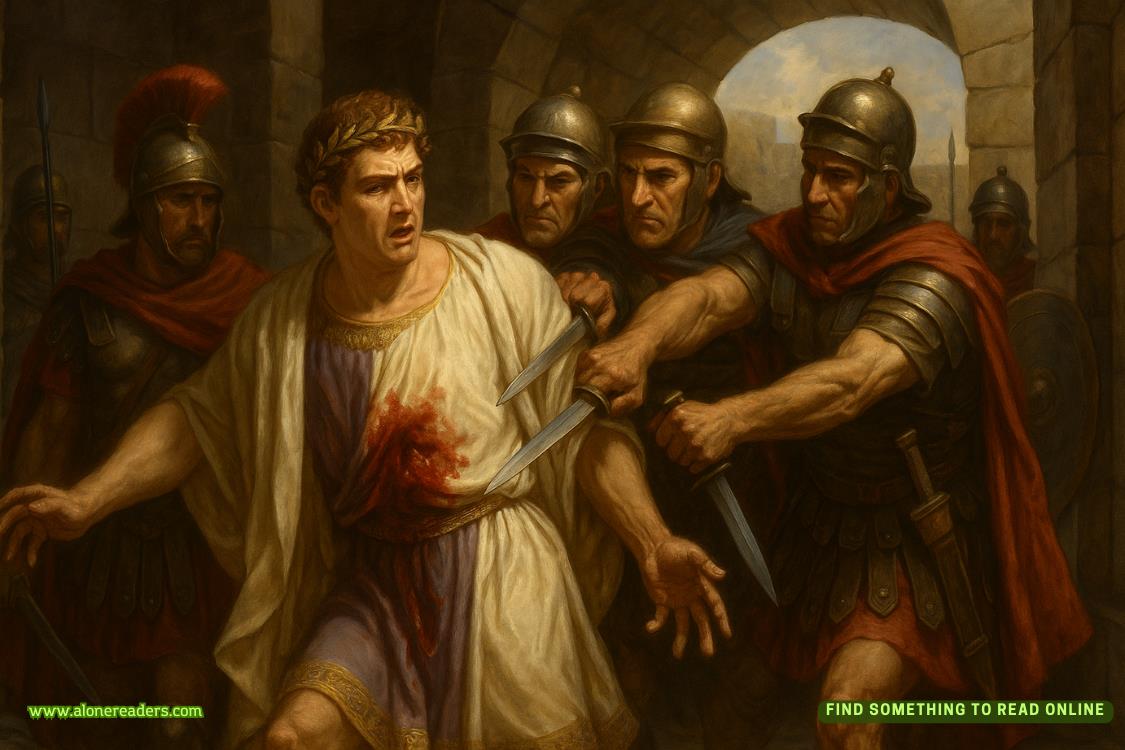I pointed to the upward curve of the asymmetrical design, specifically the flattest part of the plate while explaining, “Since you plan on doing gelato with cookies, I figured it might be nice to present the dish as a cohesive unit, rather than needing a separate plate for the cookies. And since the cookies could get soggy resting on top of the gelato, I felt a flat edge to the dish allowed for a place to set the cookies in an aesthetically pleasing way. But that’s just my interpretation. You’re the chef, so…”
Maya picked up the plate, silent as she turned it over in her hands, tracing the asymmetrical edges and running her fingers into the shallow dip in the middle of the dish. The longer she took to give any feedback, the faster my heart raced as my brain ran through worst-case scenarios. She was offended that I made presumptions as to how she’d want to present her dish. She hated my work and was trying to think of a way to let me down gently. I leaned back toward the box, reaching my hands in to pull out another few pieces of custom dishware I made for a client but hadn’t yet mailed out. “I mean, I also have other examples of my work if you’d like -”
“No need,” Maya waved me off with a hand and I paused, my fingers hovering just above the next dish in the box as she continued, “This is exactly what I want. You don’t need to show me anything else.”
I slowly pulled my hands from the box, settling my trembling fingers in my lap as I tried to wrap my head around what I thought I heard. Maya continued on, and I was surprised she was unable to hear the heavy, erratic beat of my heart as I realized that I may be supplying ceramics for one of the hottest restaurants in the city.
“Since the restaurant is fairly small with quick turnaround of dishware, we’d only need about 50 to start, but depending on how popular the dessert is, we may need more later on. We would need it all in about six weeks. Does that sound doable?”
“Sure,” I nodded, mentally calculating and organizing all the materials I’d require for a job of this size, “I would need to set aside some time in the studio for creating the pieces, and I’d probably work in small batches but yeah, I can definitely work with that timeline.”
“The studio?”
“Yeah, I work part-time atJuniper Potteryand rent wheel time and kiln space for a small fee to produce my pieces.”
Her face scrunched slightly, and I immediately tensed, sensing that I'd said something wrong. She confirmed it a moment later, hedging, “So you don’t have your own space right now?”
“No,” I admitted, less sure of myself this time as I saw Maya lean slightly further away from me, as if already trying to distance herself from the possibility of this partnership.
“But,” I continued, willing to do anything to guarantee this deal, which could catapult my business from slightly-floundering to semi-successful, “I plan on purchasing my own equipment within the next couple of months; I’ve already been looking into it.”
Maya immediately leaned back in, her elbows resting on the table as she looked again at the sample plate I brought, fingers delicately tracing over the white speckles I flicked across the surface.
“It’s not a huge rush, but it would be preferable if you had personal equipment so you could mass-produce items without having to worry about rental space and time. I don’t mean to be overly insistent but - and this has to stay between us - I plan on opening a second restaurant within the next six months or so. And if this small order goes well…there’s the possibility of having a local potter produce our entire dinnerware collection at the new restaurant. And just the sheer number of appetizer and dinner plates, bowls, mugs for coffee, small ramekins,” she trailed off for a moment, as if imagining all the possibilities overwhelmed her, finally continuing, “it would likely require someone with their own equipment.”
Despite lying to Maya’s face, I felt no remorse as I told her, “I totally understand. I’ll definitely have my own equipment within the next few months.” And even though it was a lie just moments ago, I resolved to ensure that no matter what it took, I’d have my own equipment in time to provide Maya and her new restaurant with every piece of pottery that came to mind.
After my reassurance, Maya and I hammered out the details of our arrangement, munching on black sesame cookies she had been in the midst of testing when I arrived.
Once the cookies were eaten and all the details figured out, I packed the mock-up with the rest of the sample work, thanking Maya for the opportunity and promising to keep in touch with updates as I pushed open the door. The sun had brightened considerably since I entered the dim restaurant space, and I had to squint while I precariously balanced the box on the jut of my hip as I pulled my sunglasses from my bag. Slipping them on, I checked the time before emitting a soft curse as I shuffle-ran to my car, still juggling the heavy box in my hands.
I rushed to work, still in a daze over how well the chat with Maya went, screeching into a parking spot ten minutes before my first class started. Luckily, my boss June had known about my pitch and promised to lay out all the materials for my beginner wheel throwing class. I had pre-cut clay for the class last night and laid out what I could, but June would be setting up the individual stations.
Letting myself in the back door with my key, I took a few minutes to change into the clothes I had brought along, my tank top and overalls covered in years worth of clay and glaze much more suited for teaching ceramics than the professional attire I wore toMorel. As I buckled the straps to my overalls, June flew through the door, bangles announcing her entrance moments before she stood in front of me.
June was almost exactly what you’d expect when you thought of an artist. Or more specifically, that cool art teacher you had in elementary school who taught you splatter art and let you make weird monsters out of clay instead of an ashtray for father’s day. Her brown hair had waves similar to my own, but where mine stopped just at my shoulders and was usually up in a half bun or ponytail to keep it off my face, hers spilled in loose waves around her shoulders and halfway down her back. She wore loose skirts and flowing dresses that she somehow kept clean despite working with clay all day and wore a multitude of bracelets she constantly left in piles around the studio.
Compared to her kind, motherly vibe, I probably looked like her punk-rock-loving daughter, with my shoulder-length waves I had twisted back in haphazard knots, stained overalls, and combat boots splashed in multiple colors of glaze. Our artistic styles differed as well, helping to appeal to a variety of ceramic artists in the area.
June specialized in basic earthenware with intricately designed patterns and artwork using techniques with slip and glaze. She painted on detailed nature scenes or occasionally geometric patterns, spending more time on the glazing than throwing the pottery. On the other hand, I specialized in the type of ceramics I showed Maya earlier in the day: asymmetrical designs with unique structure, adding in curves and dips and designs when throwing the pottery while leaving my glazing technique rather minimal. Our students often came to my classes first to learn structure and design before moving onto June’s classes, adding beautiful designs that I usually found too fiddly to attempt.
“How was the pitch?” She asked, her soothing voice somehow both demanding and sympathetic, ready to celebrate or comfort depending on my response.
“She loved it!” I burst out, unable to contain my squeals as June grabbed me around my waist, her bangles and my still-unbuttoned overall strap creating discordant jingling as we jumped up and down, arms around one another.
“I told you she would; your work was perfect. Much more modern than the stuffy tea rooms who request my work.”
I rolled my eyes at her exaggeration, knowing full well that her art drew crowds from states away. June had built her business from the ground up at my age, selling her pottery at small fairs and wellness stores until she saved enough to buy the storefront. She took me under her wing when I was aimless, pursuing a degree in accounting at the local university that was sucking my soul day by day. I had taken classes using my Christmas money, and after the classes ran out June had allowed me to do odd jobs around the studio - wedging clay, mopping the floors - in exchange for free classes.
Pottery had stuck around as a hobby and a creative outlet when I worked as an accountant full time. It had slowly turned into a part-time business when a local influencer bought a piece of mine at the studio and shared it with her 500,000 followers, causing enough direct messages through the studio’s and my personal social media accounts that I was forced to start my own website.
June had supported me wholeheartedly. She offered the use of the space after hours for a substantially discounted rate. When I was too scared to make the jump to pursuing my pottery full-time, she offered me a job teaching classes part time. She had also taught me everything I knew, and any success I had was thanks to her and the motherly role she stepped into after I had lost my own.
I told her as much, but she waved me off, wiping her eyes at the gathering tears as she told me, “All your success is your own. I just feel privileged to be here to witness it. Now go teach your class, you lazy ass.” She pushed me out the door as I laughed, yelling after me, “I’m proud of you!”
Chapter4
Her















